Set Up an Integration System User (Optional)
1
Go to Create Integration System User
Search for and open the 
Create Integration System User task.
2
Enter account information
Enter a username and strong password in the Account Information section, then click 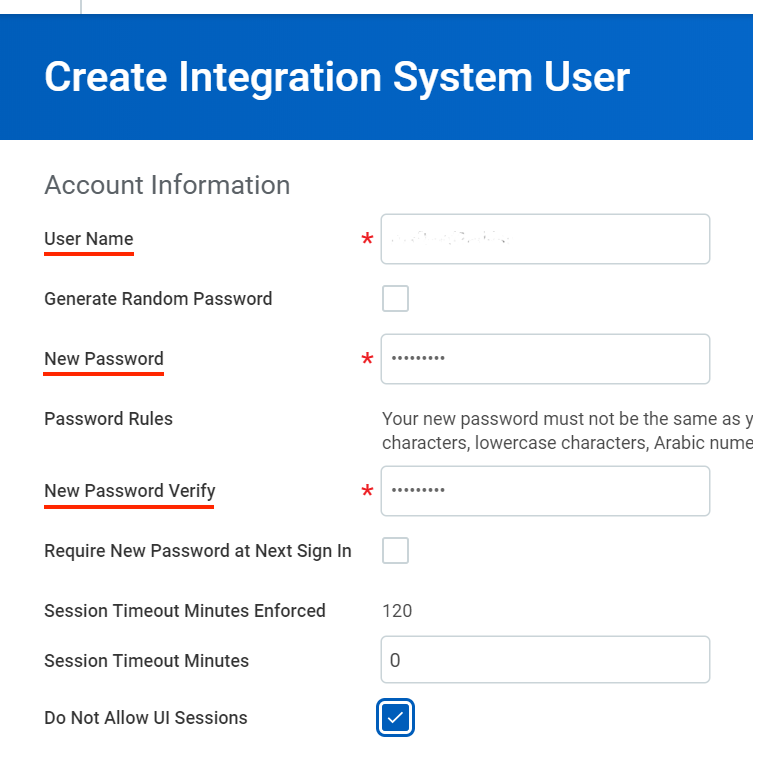
OK to create the user.
Create and View a Custom Report (Optional)
1
Go to Create Custom Report
Search and navigate to the 
Create Custom Report task
2
Configure custom report
Follow the steps below to configure the custom report: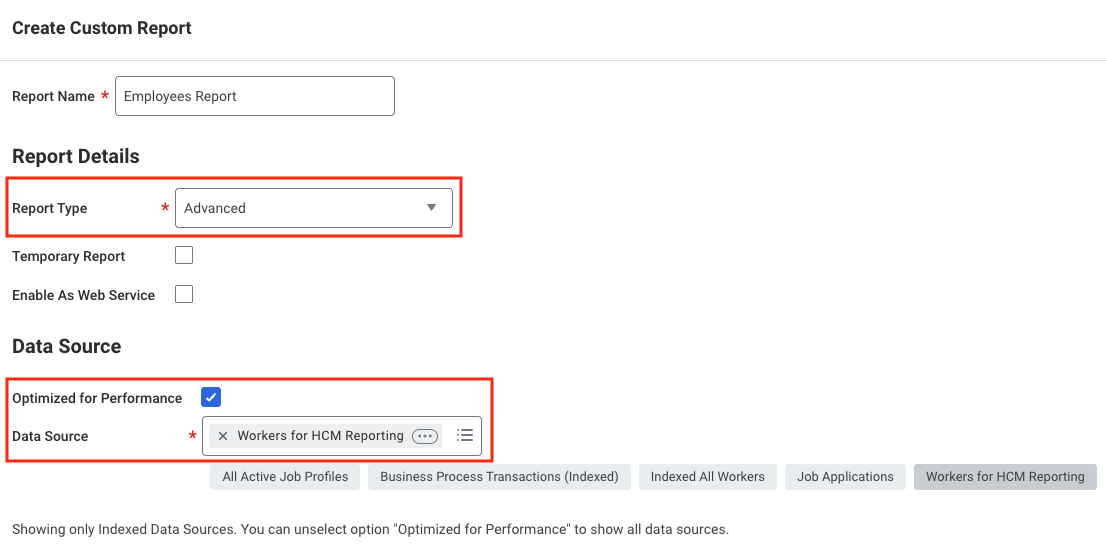
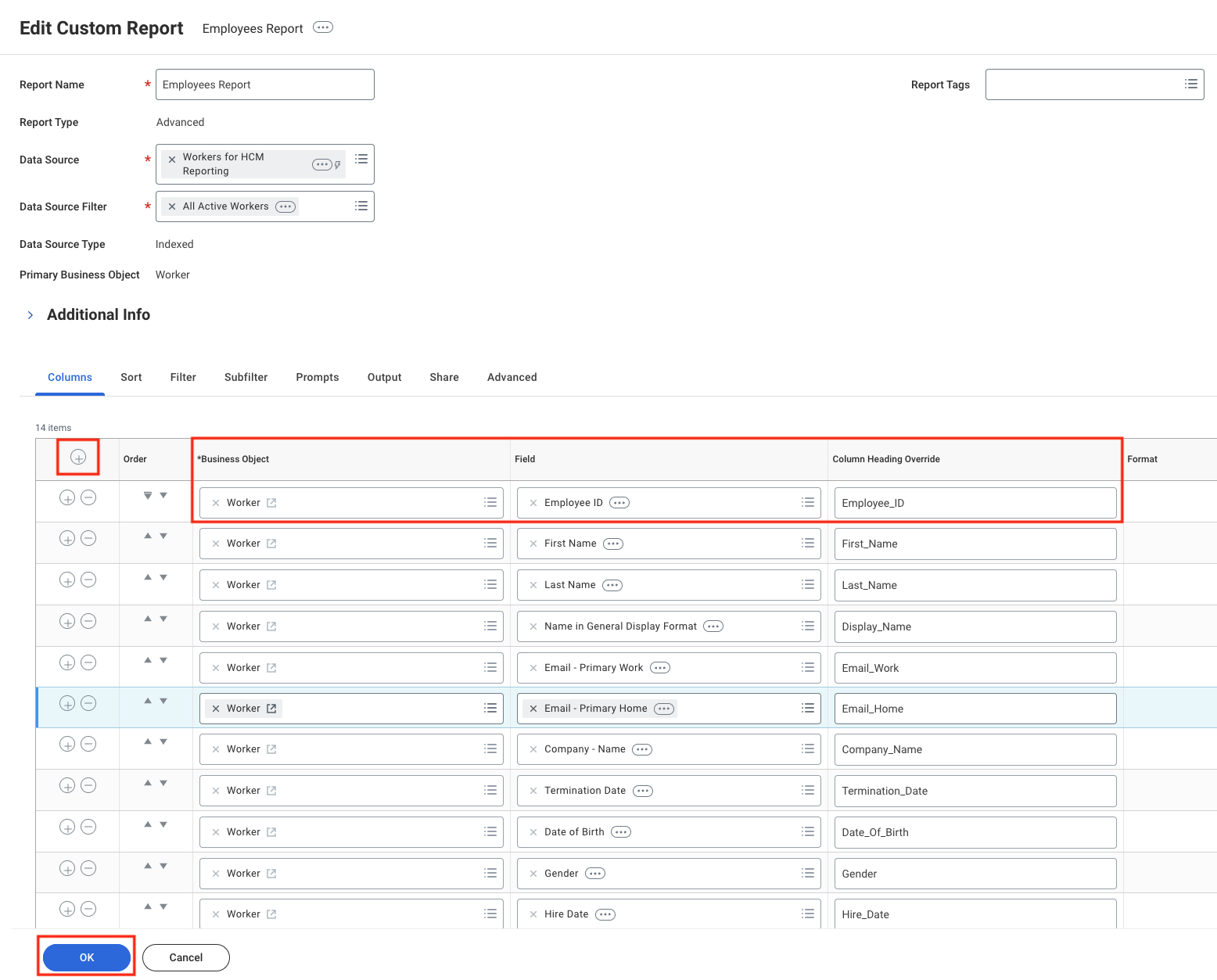
- Report Name: Must be unique within the tenant
- Report Type: Select Advanced
- Optimised for Performance: Tick this box to enhance performance
- Data Source: Choose the appropriate data source based on the data you need (e.g. Workers for HCM reporting).

OK to continue.Add and configure report fields:- Click the
+icon to add a field. - Select a Business Object (e.g. Worker) in the Business Object column.
- Choose the specific field (e.g. Employee ID) in the Field column.
- Set aliases in Column Heading Override and Column Heading Override XML Alias to ensure stable field names in API responses.
For employee data, you can include the following fields:
- Employee_ID
- First_Name
- Last_Name
- Display_Name
- Email_Work
- Email_Home
- Phone_Work
- Phone_Home
- Job_Title
- Hire_Date
- Gender
- Date_Of_Birth
- Termination_Date
- Company_Name

3
Configure report filters (Optional)
Add filters to narrow the result data set (e.g. Supervisory Organisation – Primary Position).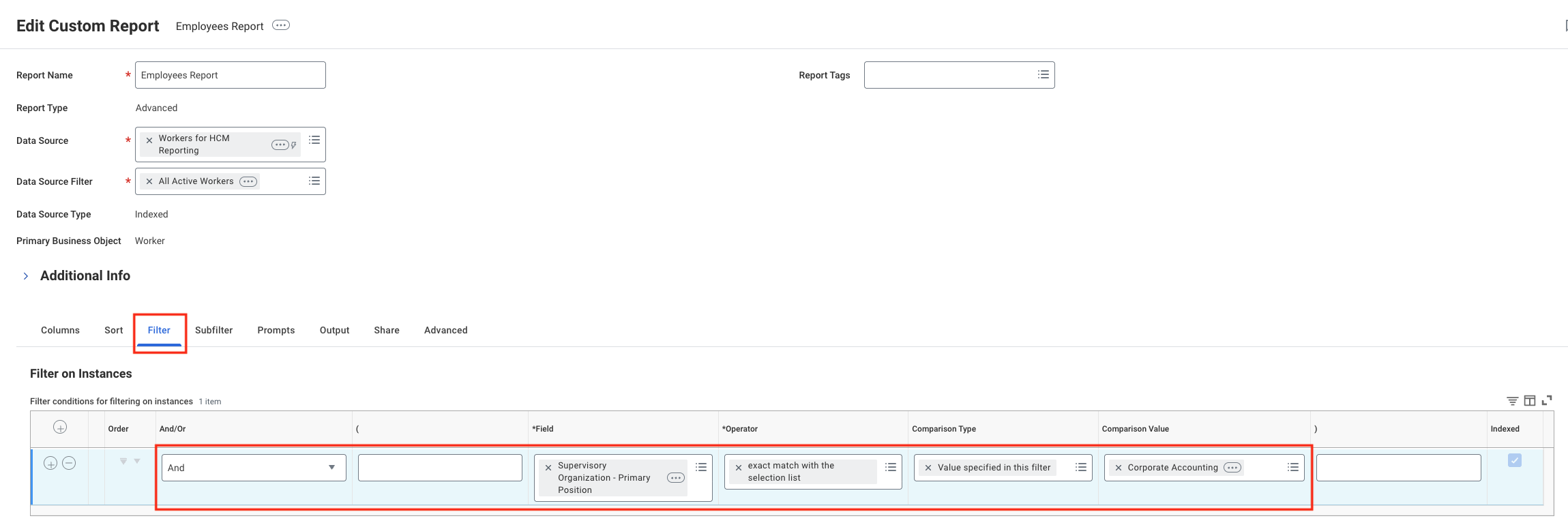

4
Configure report prompts
Enable prompt display by ticking Display Prompt Values in Subtitle. Leave other settings at their defaults.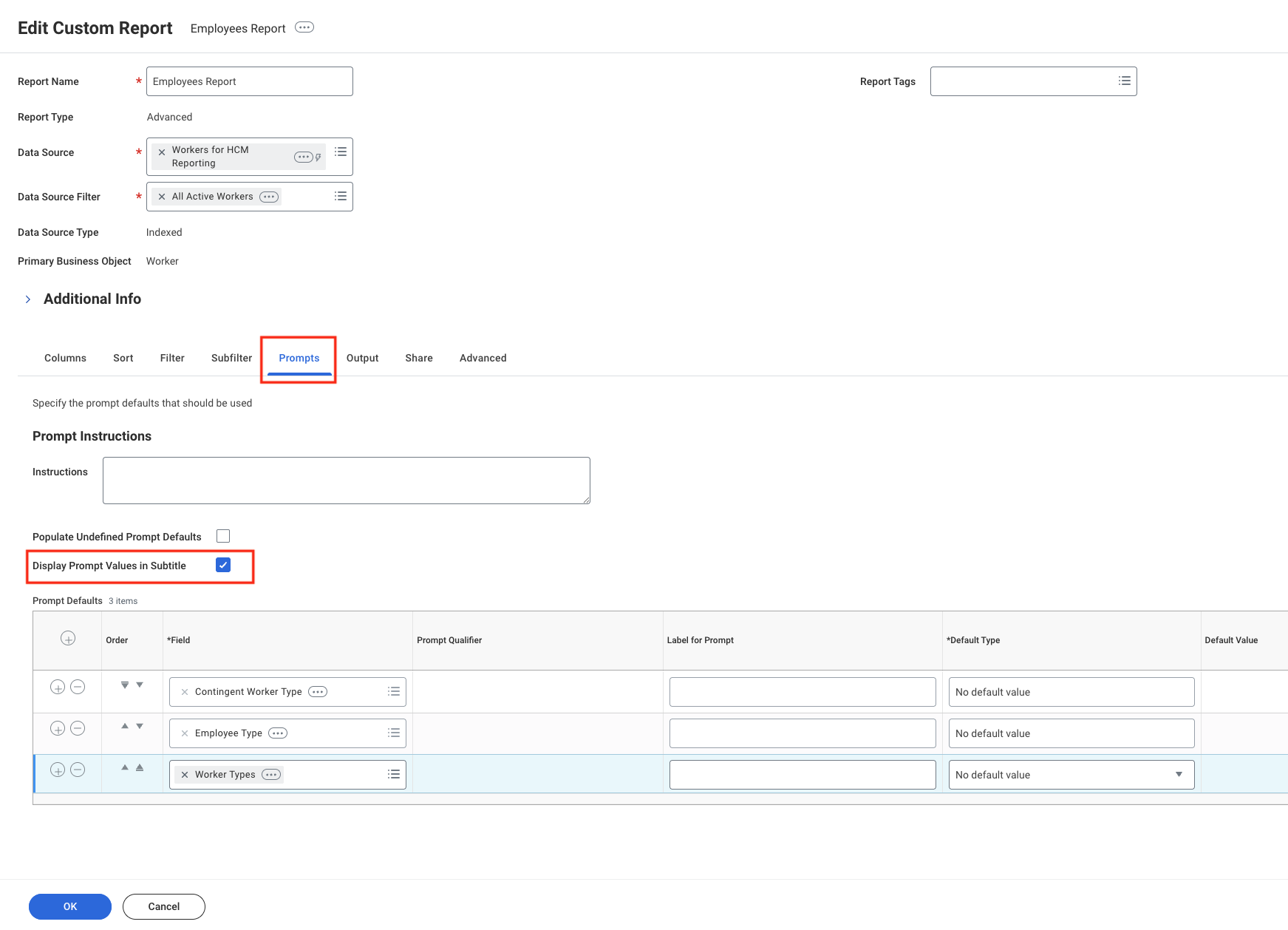

5
Configure advanced options
Tick Optimised for Performance and Enable As Web Service. Leave other advanced options unchanged.

OK to save the report.6
Go to View Custom Report
Search for 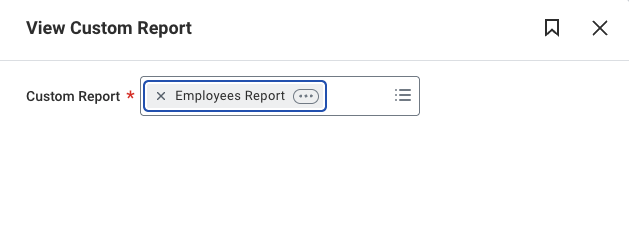
View Custom Report, select the report you just created, then click OK to open it.
7
Retrieve the Report URL
Open the three‑dot menu, select Web Service > View URLs; you will be redirected to the View URLs Web Service page.
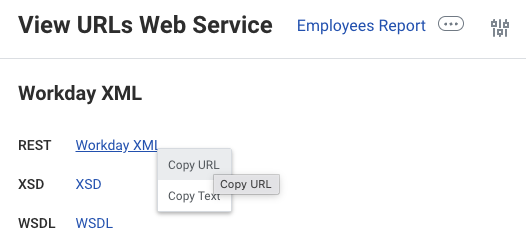


Connecting to StackOne
Use the ISU Username, ISU Password, and Report URL to create a connection.
After connecting and calling the unified List Employees endpoint, you may see:
Scenario 2 = missing Security Group permissions for the ISU.
Scenarios 3 & 4 = insufficient report access for the ISU credentials used.Proceed to Configure Security Group Permissions for the ISU (Required for non‑null data) and Configure Custom Report Access for the ISU (Required for report access) to resolve issues.
- A response with all fields populated.
- A response with fields present but values are
null. - An error:
The task submitted is not authorized. - An error:
Report not found.
Scenario 2 = missing Security Group permissions for the ISU.
Scenarios 3 & 4 = insufficient report access for the ISU credentials used.Proceed to Configure Security Group Permissions for the ISU (Required for non‑null data) and Configure Custom Report Access for the ISU (Required for report access) to resolve issues.
Configure Security Group Permissions for the ISU (Required for non‑null data)
1
Create a Security Group
Search for and open the Create Security Group task.

2
Select type of Tenanted Security Group
Choose 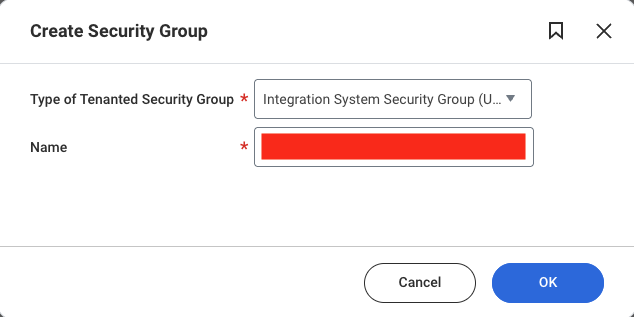
Integration System Security Group (Unconstrained) and enter a name for the Security Group.
OK.3
Assign the ISU to the Security Group
Select 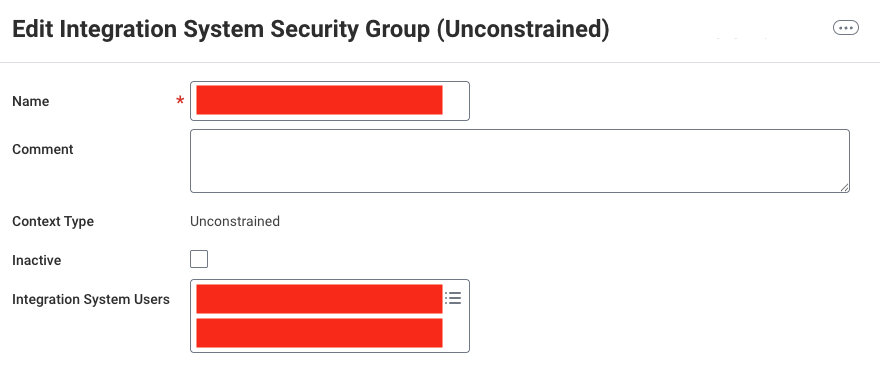
Integration System Users. Pick the ISU created earlier (or another integration user).
OK to save.4
Go to Maintain Permissions for Security Group
Search for 
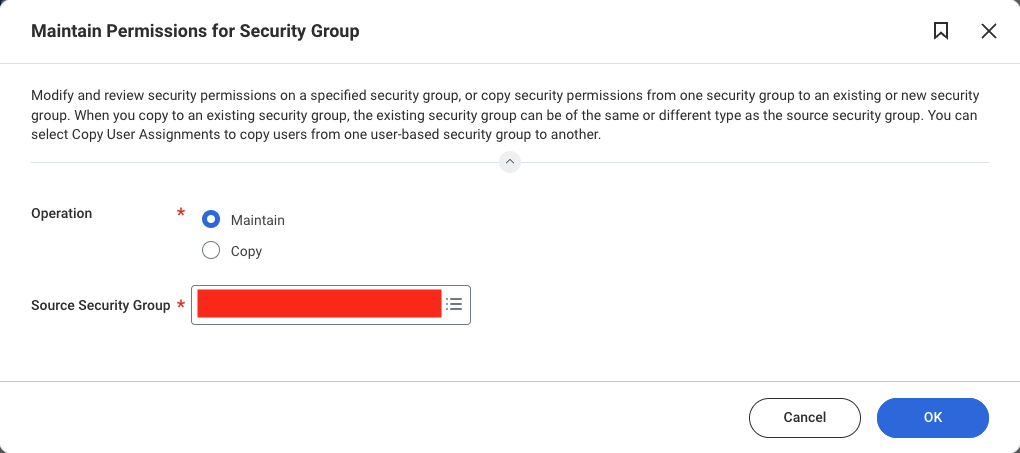
Maintain Permissions for Security Group and open it.

5
Configure Domain Security Policy Permissions
Set required Domain Security Policy Permissions to Get Only in the View/Modify Access column. Common Domain Security Policy Permissions are listed below: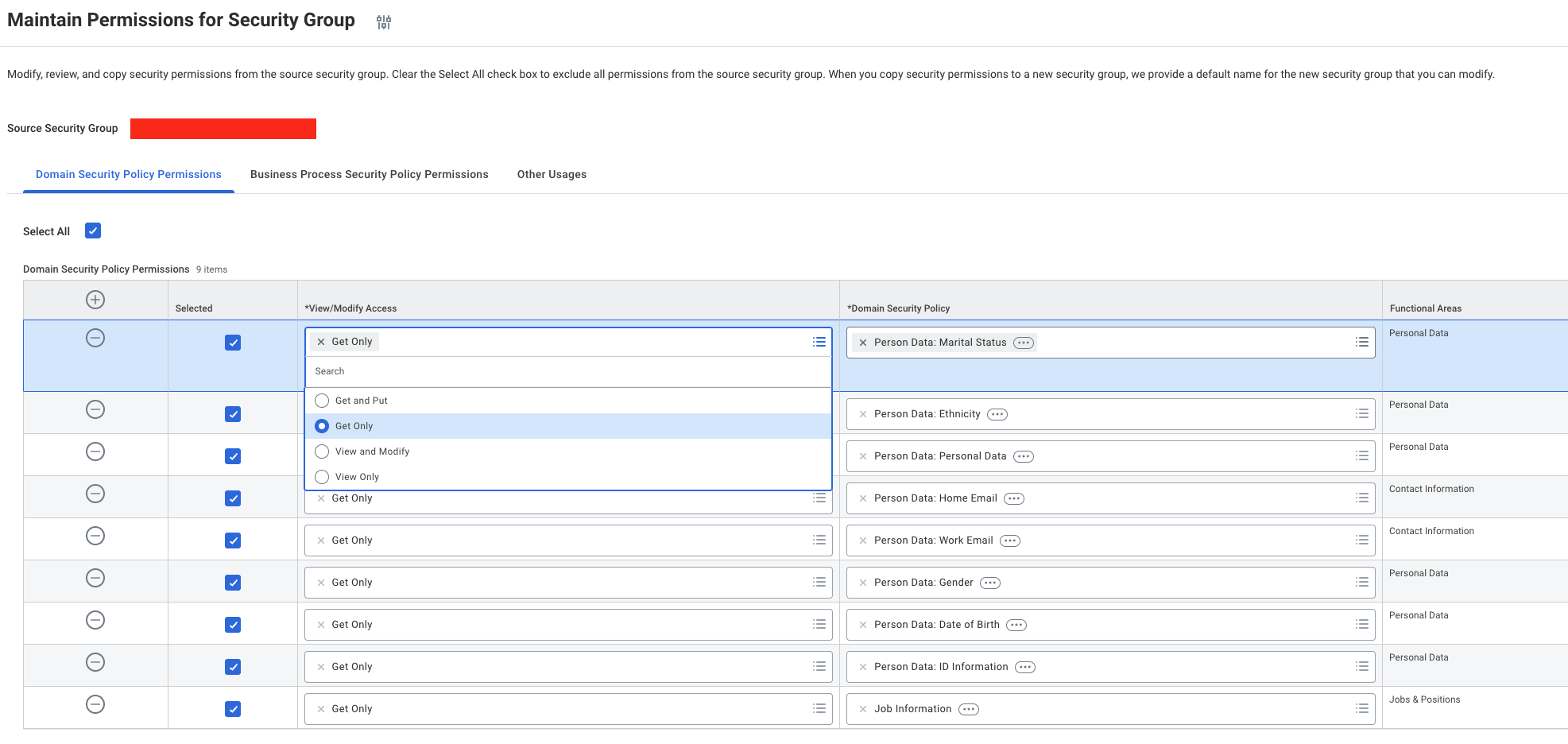

Please note that Domain Security Policy Permissions can be customised within a Workday organisation, and this list does not account for such customisations.
| Domain Security Policy | View/Modify Access |
|---|---|
| Job Information | Get Only |
| Person Data: Date of Birth | Get Only |
| Person Data: Ethnicity | Get Only |
| Person Data: Gender | Get Only |
| Person Data: Home Email | Get Only |
| Person Data: ID Information | Get Only |
| Person Data: Marital Status | Get Only |
| Person Data: Personal Data | Get Only |
| Person Data: Work Email | Get Only |
6
Activate security changes
Search for Activate Pending Security Policy Changes and open it.

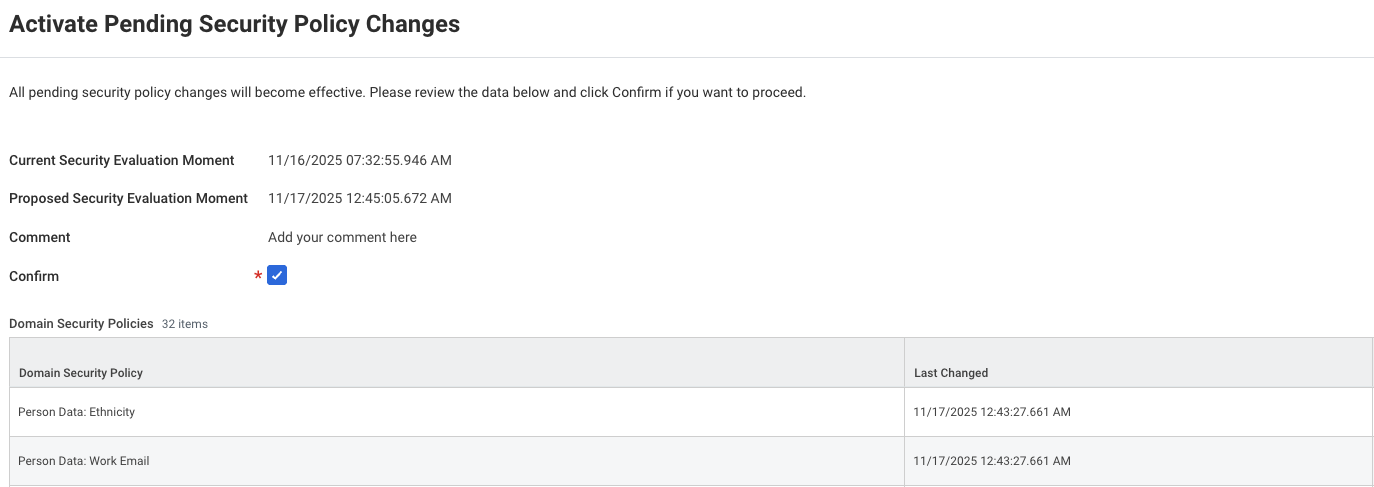


OK.
Configure Custom Report Access for the ISU (Required for report access)
1
Open the report
Search for 

View Custom Report.

2
Check current ownership
Navigate to the 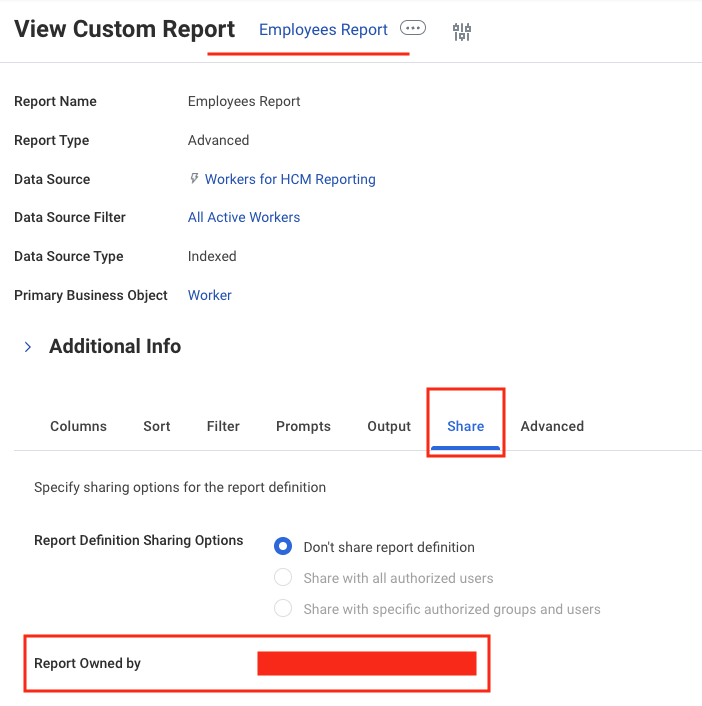
Share tab and view the Report Owned by value.
3
Transfer ownership (if required)
If the current owner is not the ISU you intend to use to connect with StackOne, open the three‑dot menu under Custom Report and select 
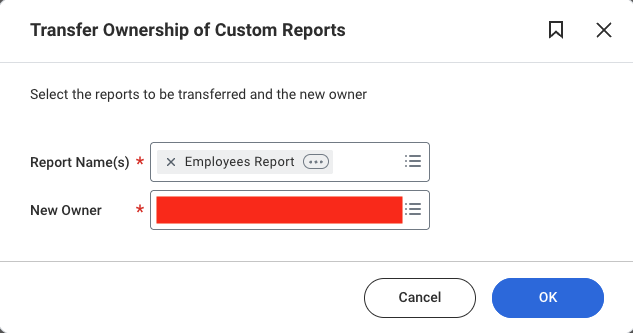
Transfer Ownership.
New Owner and click OK.
4
Grant access without transferring ownership
To grant access, choose 
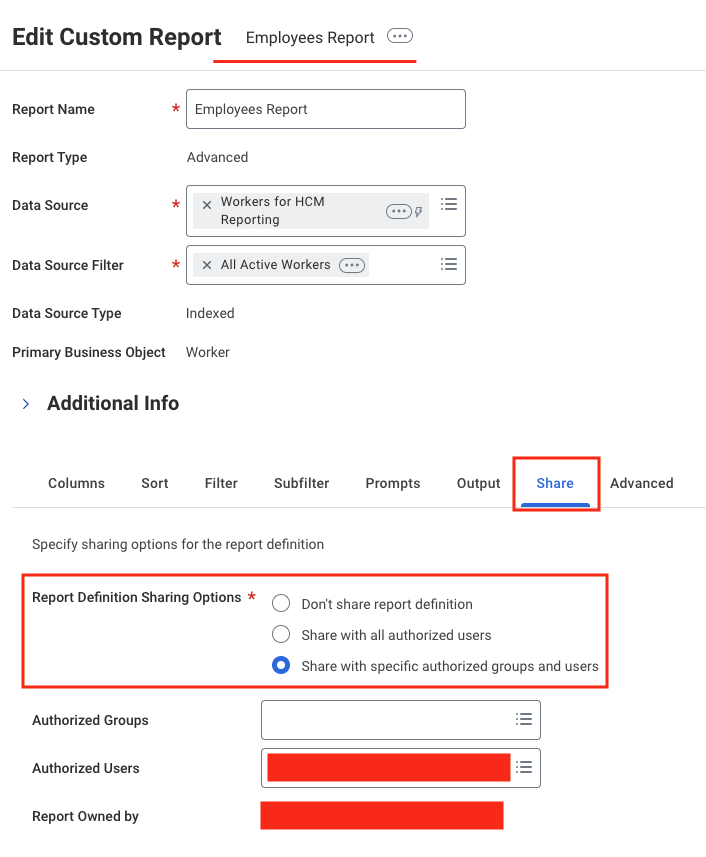
Edit under Custom Report from the three‑dot menu.
Three options exist under Report Definition Sharing Options; the appropriate option for controlled user access is described in this guide.
Share tab, select Share with specific authorized groups and users, choose the desired ISU in Authorized Users, then click OK.Report Definition Sharing Options Explained
Report Definition Sharing Options Explained
- Do Not Share Report Definition: Only the owner can access and retrieve data through the Report URL. If ownership changes or other ISU credentials are used, errors such as
Report not foundorThe task submitted is not authorizedmay occur. - Share with All Authorized Users: All ISU users can access the report. Ownership should remain with the report creator; otherwise StackOne connections using other users’ credentials may encounter a
Report not founderror. - Share with Specific Authorized Groups and Users: Restrict access to selected groups/users.
- No selection acts like
Do Not Share Report Definition. - Selecting users allows both owner and selected ISU users to access the report (ownership must still stay with the report creator to avoid a
Report not founderror).
- No selection acts like

Troubleshooting
1
Connection errors
- Verify ISU credentials in the StackOne Connector Hub.
- Verify the Report URL is correct and reachable.
2
Null field values
- Add missing Domain Security Policy Permissions as described in the security configuration section.
- Activate pending security policy changes after modifications.
- Retry the endpoint (fields populate once permissions are effective).